The simplest way to differentiate vectors from scalars is to take Speed vs. Velocity.
 In the path shown above, assume that the particle has a fixed speed. While it's speed does not change, it does have an acceleration, as the direction changes constanly.
In the path shown above, assume that the particle has a fixed speed. While it's speed does not change, it does have an acceleration, as the direction changes constanly.

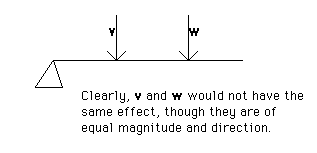
Def: A unit vector is a vector of length (magnitude) one.
The 2-D space with which we are very familiar has two particular unit vectors reffered to as a "Basis." They are the i and j vectors. Because they are a Basis every vector can be written in terms of these two vectors. For example v = 3i + 2j. Thus, one can determine the components of v. It is important; however, to differentiate between the scalar and vector components.
Scalar Components: 3,2 Vector Components: 3i, 2j
There are two ways to add vectors, geometrically and algebraically.
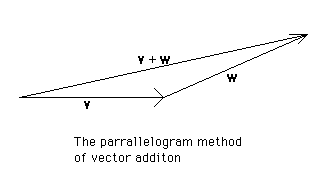
v = 3i - 2j, w = i + j
v + w = 4i - j
The Magnitude of a vector is it's length, defined in 2-D as below.

Def: The direction of v is a unit vector parallel to v

For example:
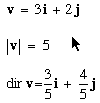
But what does this mean? We usually think of direction in terms of angles, not components of vectors. This brings us to slope.
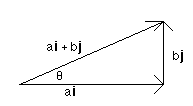

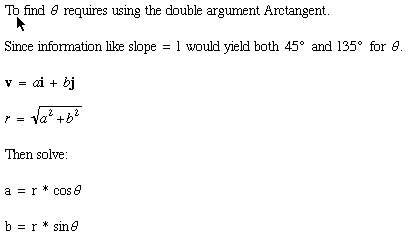
This can be used to find unit tangents and normals to curves defined in the x-y plane. Any curve will have two unit tangents and two unit normals at any point, so it is necessary to differentiate betweent the clockwise and counterclockwise tangents and the in and out unit normals. The example below shows an inward unit normal and a clockwise unit tangent.

In order to find these tangents, it is necessary to "marry" calculus and slope. Since the derivitive, dy/dx, is equal to the slope, b/a, you can find the unit tangent vector simply by setting these two quantities equal to each other. Namely:
dy/dx = b/a